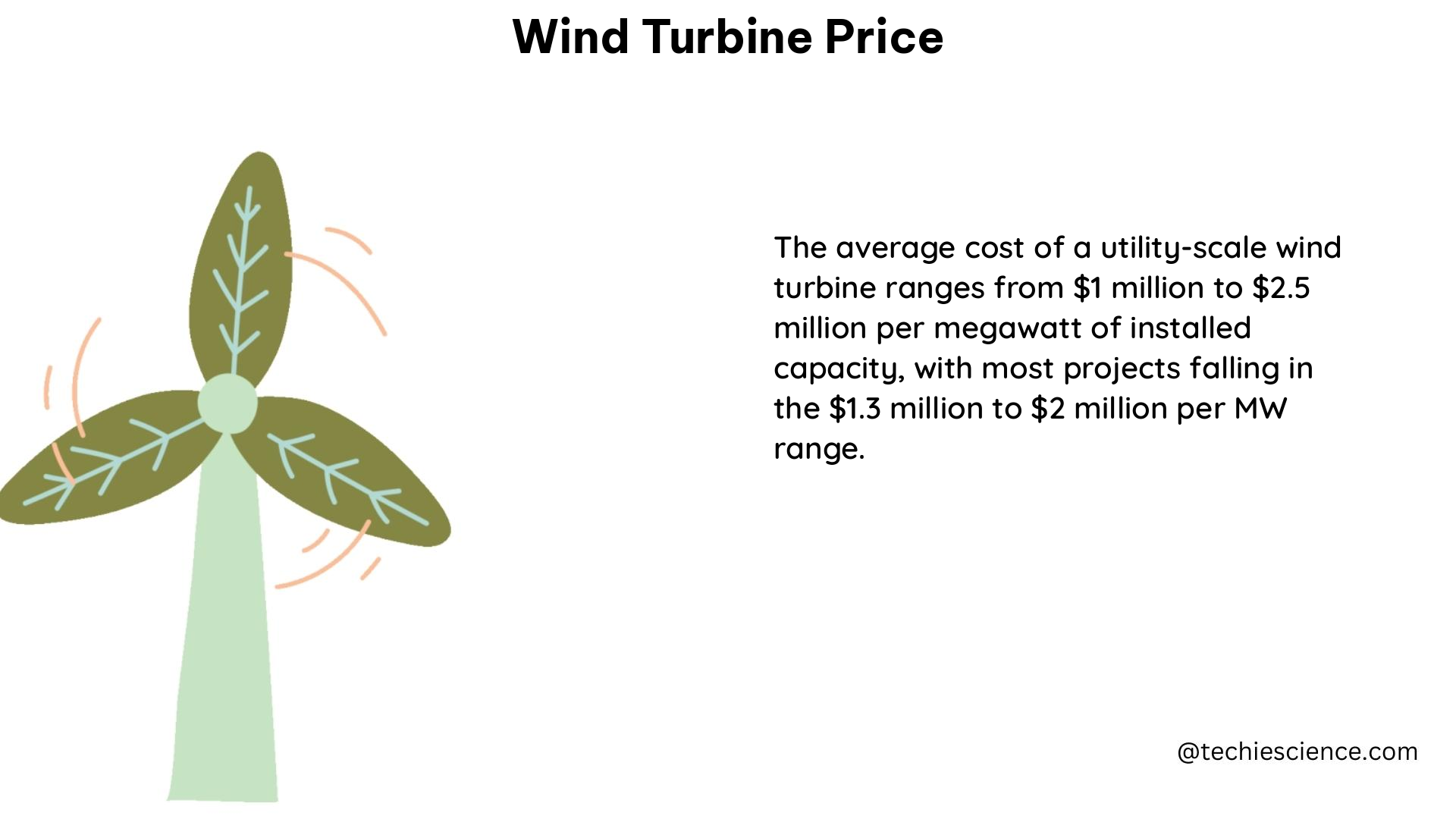Wind turbine prices can vary significantly, ranging from $800/kW to $950/kW for land-based wind turbines, according to the latest Land-Based Wind Market Report from the Department of Energy. This price range represents a 5-10% increase compared to the previous year, reflecting the dynamic nature of the wind energy market.
Understanding the Factors that Influence Wind Turbine Prices
Turbine Size and Capacity
The size and capacity of a wind turbine are primary drivers of its price. Larger turbines, with higher power ratings, generally cost more due to the increased materials, engineering, and installation requirements. For example, a 2 MW wind turbine may cost around $1.6 million, while a 5 MW turbine can range from $3.5 million to $5 million.
Turbine Type and Technology
The type of wind turbine technology also plays a significant role in the overall price. Newer, more advanced turbines with features like variable-speed generators, pitch control, and improved aerodynamics tend to be more expensive than older, simpler designs. Offshore wind turbines, which must withstand harsher environmental conditions, can cost 50-100% more than their land-based counterparts.
Location and Site Conditions
The location and site conditions of a wind turbine installation can significantly impact the price. Factors such as terrain, accessibility, and proximity to grid infrastructure can all influence the costs associated with transportation, site preparation, and grid connection. Remote or challenging locations can add significant costs to a project.
Installation and Balance of System Costs
In addition to the turbine itself, the installation and balance of system (BOS) costs can account for a substantial portion of the overall project expenses. BOS costs include foundations, towers, electrical infrastructure, and other supporting components. These costs can vary widely depending on the project’s scale, site conditions, and local labor and material prices.
Economies of Scale
The wind energy industry has seen significant cost reductions over the past decade, driven in part by economies of scale. As the industry has grown and manufacturing processes have become more efficient, the per-unit cost of wind turbines has decreased. This trend is expected to continue as the industry matures and technology advancements are realized.
Material Costs
The prices of raw materials used in wind turbine manufacturing, such as steel, copper, and fiberglass, can also impact the overall cost of a wind turbine. Fluctuations in commodity prices can lead to changes in turbine prices, as manufacturers adjust their pricing to account for these variations.
Labor and Productivity
The cost of labor, both in manufacturing and installation, can also influence wind turbine prices. Improvements in employee productivity, through automation, training, and process optimization, can help drive down the labor costs associated with wind turbine production and deployment.
Legal and Financial Considerations
Finally, the legal and financial aspects of a wind turbine project can also contribute to the overall cost. Factors such as permitting, regulatory compliance, and financing terms can all impact the final price tag of a wind turbine installation.
Trends and Forecasts in Wind Turbine Pricing

According to the NREL Annual Technology Baseline, the levelized cost of energy (LCOE) for land-based wind turbines is expected to continue declining in the coming years, reaching around $30/MWh by 2030. This cost reduction is driven by a combination of factors, including:
- Increased turbine size and capacity, leading to higher energy output per turbine
- Advancements in turbine technology, improving efficiency and reliability
- Continued improvements in manufacturing processes and supply chain optimization
- Economies of scale as the wind energy industry grows
The NREL data also suggests that offshore wind turbine prices are expected to decline more rapidly than their land-based counterparts, with LCOE projections reaching around $50/MWh by 2030.
Conclusion
Wind turbine prices are a complex and dynamic topic, influenced by a wide range of factors. By understanding the key drivers of wind turbine costs, including turbine size, technology, location, installation, and market trends, individuals and organizations can make more informed decisions when planning and investing in wind energy projects. This comprehensive guide provides a solid foundation for navigating the intricacies of wind turbine pricing and making strategic choices in the rapidly evolving wind energy landscape.
References:
- Land-Based Wind Market Report: 2022 Edition – Department of Energy
- Wind Data and Tools | Wind Research – NREL
- Understanding wind turbine price trends in the U.S. over the past decade

The lambdageeks.com Core SME Team is a group of experienced subject matter experts from diverse scientific and technical fields including Physics, Chemistry, Technology,Electronics & Electrical Engineering, Automotive, Mechanical Engineering. Our team collaborates to create high-quality, well-researched articles on a wide range of science and technology topics for the lambdageeks.com website.
All Our Senior SME are having more than 7 Years of experience in the respective fields . They are either Working Industry Professionals or assocaited With different Universities. Refer Our Authors Page to get to know About our Core SMEs.